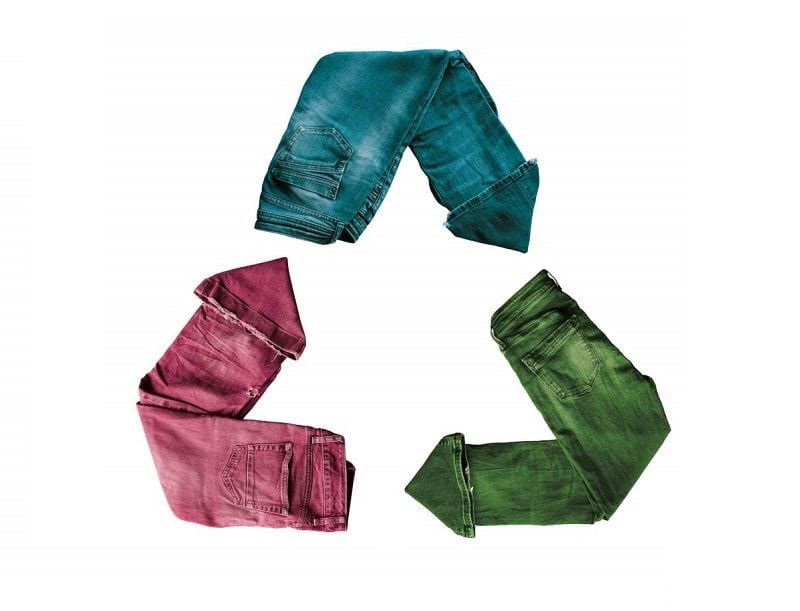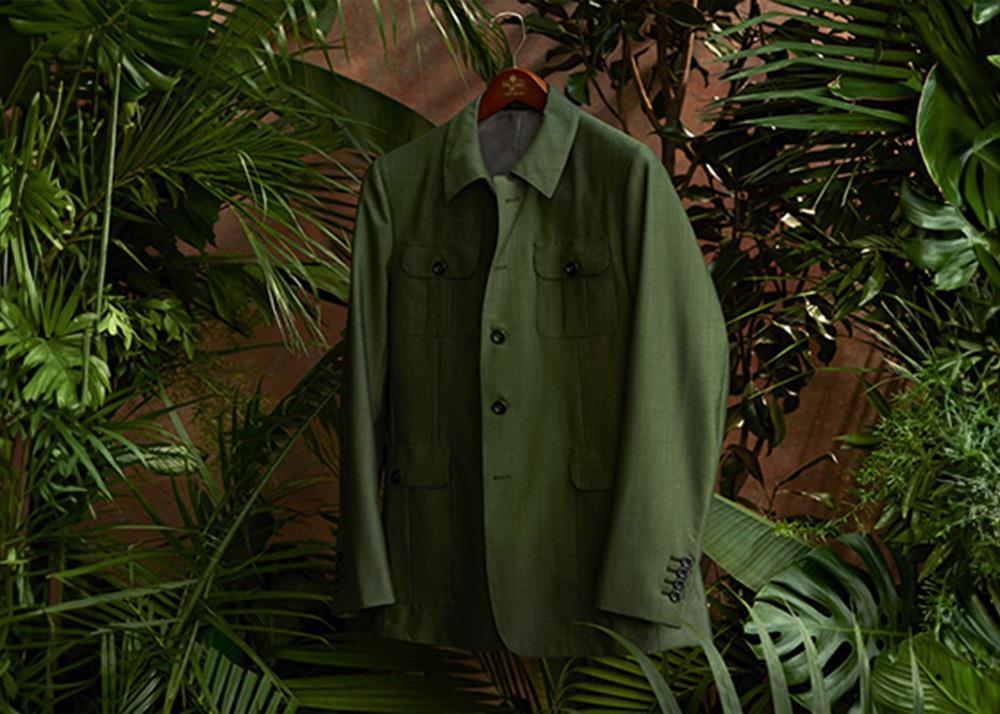Sustaining Regional Cape Town Sustainable Fashion for a Greener Future
Sustaining Regional Cape Town Sustainable Fashion for a Greener Future
Blog Article
Stay Ahead of the Curve by Checking Out Cutting-edge Style Trends
In a market as vibrant as fashion, remaining in advance involves greater than simply complying with current fads-- it demands an exploration of advancement. Smart textiles, for instance, are changing garments into practical masterpieces, while 3D printing is transforming design procedures with its customizable, waste-reducing capabilities. As sustainability comes to be a cornerstone, developments like environment-friendly products and round fashion practices are reshaping environmental duty - Cape Town Sustainable Fashion. Additionally, the merging of innovation and style declares a new period of customer interaction. Just how, after that, can these arising trends redefine the future of style, and what ramifications do they hold for brands seeking to thrive in this advancing landscape?

Accepting Smart Textiles
In recent years, the apparel industry has observed a transformative change with the combination of smart fabrics, a sophisticated innovation that mixes modern technology with fabric. This advancement represents not just a combination of appearances and capability yet also a considerable leap towards sustainability and personalization in style. Smart textiles, additionally understood as e-textiles, embed innovative electronics such as sensing units and conductive strings within the textile, enabling garments to communicate with the user or the setting.
These fabrics are made to keep an eye on physiological parameters, such as heart price or body temperature, offering real-time health and wellness analytics. Past health applications, clever fabrics are additionally being utilized for adaptive clothes, which can change shade or pattern in response to environmental stimulations, hence offering a vibrant fashion experience.
In addition, the development of energy-harvesting fabrics that create power from motion or sunlight is leading the means for self-dependent wearable innovation. This technology is attracting ecologically aware customers and developers intending to reduce the eco-friendly footprint of style. As r & d in this field development, wise textiles are anticipated to end up being progressively prevalent, reshaping the landscape of modern style with their multifunctional capabilities.
The Rise of 3D Printing
Transforming the manufacturing landscape, 3D printing has actually become a game-changer in the apparel industry. This sophisticated technology has enabled designers to push the borders of creative thinking, generating detailed and tailored garments that were formerly unbelievable. By leveraging electronic design and additive manufacturing, 3D printing promotes the production of complicated geometries and patterns, permitting developers to trying out brand-new structures and structures.
A notable advantage of 3D printing in fashion is its capability to create on-demand, lessening waste and lowering supply demands. This efficiency not only enhances manufacturing processes yet additionally allows for rapid prototyping, allowing developers to bring their visions to life in a shorter duration. Furthermore, 3D printing sustains customization somewhat unmatched by traditional methods, offering individualized fits and distinct styles tailored to individual consumer preferences.
The surge of 3D printing has additionally equalized style, making it easily accessible to arising developers who can now fabricate premium items without considerable monetary investment in conventional manufacturing facilities. As innovation remains to advancement, the fashion business is poised to harness the complete possibility of 3D printing, exploring brand-new materials and techniques that will undoubtedly redefine exactly how style is developed and produced.
Sustainable Fashion Technologies
As the garment industry faces journalism demand for ecological responsibility, sustainable fashion innovations have actually arised at the forefront of transformative adjustment. The expanding awareness of eco-friendly effect has actually fueled a shift towards more eco-conscious practices and materials. Brand names and designers are currently focusing on sustainability, including techniques that minimize waste and reduce carbon footprints.
One considerable development is the rise of circular fashion, which highlights recycling and upcycling to prolong the lifecycle of garments. This strategy not only minimizes waste however additionally urges consumers to take on a much more conscious technique to apparel consumption. In addition, making use of lasting materials, such as natural cotton, hemp, and recycled polyester, has obtained grip. These materials call for much less water and energy during manufacturing, substantially decreasing environmental impact.
One more development lies in the adoption of cutting-edge dyeing strategies that utilize natural dyes or waterless procedures, therefore decreasing the huge quantities of great post to read water and chemicals traditionally used in textile dyeing. Additionally, improvements in biotechnology have actually led to the production of lab-grown leather and fabrics, supplying eco friendly and cruelty-free alternatives to conventional materials. Through these pioneering efforts, the apparel industry is making meaningful strides in the direction of a much more lasting future.

Tech-Integrated Garments
Tech-integrated apparel represents a groundbreaking fusion of style and innovation, improving how people engage with their clothes. This cutting-edge domain name is marked by the inclusion of wise textiles and embedded digital components, improving both capability and visual charm. From physical fitness trackers embedded in sportswear to heated coats managed using mobile phone apps, tech-integrated garments uses customers unmatched ease and flexibility.
Pioneering brands are driving this fad, concentrating on developing garments that react to environmental stimuli or user commands. For instance, some garments can alter shade or pattern in response to temperature level shifts, while others incorporate biometric sensors to keep an eye on health and wellness metrics like heart rate or stress and anxiety levels. The seamless integration of innovation right into textiles likewise reaches environmental sustainability, with initiatives to create self-cleaning fabrics or garments that get used to weather conditions, therefore lessening the requirement for multiple layers.
Furthermore, the development of wearable technology is not just restricted to garments but encompasses devices like watches and eyewear, more expanding the scope of tech-integrated fashion. As the market remains to innovate, the possibility for customization and customization in garments expands, supplying customers one-of-a-kind, tech-enhanced fashion experiences that accommodate their private needs and choices.
Future of Virtual Style
Recently, the future of virtual style has become a transformative pressure within the sector, leveraging innovations in digital technology to redefine exactly how style is produced, experienced, and eaten. By integrating enhanced truth (AR), online truth (VIRTUAL REALITY), and 3D style tools, designers can currently craft immersive and interactive experiences that transcend traditional fashion borders. Virtual fashion enables for the creation of garments that exist entirely in digital atmospheres, providing countless possibilities for development without the constraints of physical production.
This electronic change not just provides possibilities for innovative expression yet likewise addresses sustainability worries fundamental in typical style techniques. Cape Town Sustainable Fashion. By getting rid of the demand for physical resources, online style lowers waste Extra resources and lessens carbon impacts. Moreover, the increase of virtual style aligns with the boosting customer demand for tailored and distinct experiences, as online garments can be customized and customized to individual choices easily

Verdict
The fashion sector's future depend on the assimilation of lasting methods and ingenious technologies - Cape Town Sustainable Fashion. Smart fabrics and tech-integrated garments are improving performance, while 3D printing offers chances for personalization and waste reduction. Lasting fashion, via round approaches and eco-friendly products, shows a commitment to ecological stewardship. Furthermore, online fashion is poised to redefine consumer communications. Adapting to these patterns is necessary for brands seeking to continue to be competitive and relevant in this swiftly advancing landscape.
In recent years, the fashion industry has actually experienced a transformative shift with the assimilation of wise textiles, a cutting-edge technology that mixes innovation with fabric.As the style industry look at this web-site grapples with the pressing requirement for ecological responsibility, lasting fashion advancements have arised at the center of transformative change.In current years, the future of virtual style has actually emerged as a transformative force within the industry, leveraging developments in electronic modern technology to redefine exactly how fashion is created, experienced, and taken in. The surge of digital fashion straightens with the enhancing customer demand for customized and distinct experiences, as virtual garments can be tailored and customized to specific preferences with ease.
The fashion market's future lies in the combination of sustainable techniques and ingenious modern technologies.
Report this page